arnhem oosterbeek war cemetery
ARNHEM OOSTERBEEK WAR CEMETERY
By Damien Lewis
ARNHEM OOSTERBEEK WAR CEMETERY
HISTORY INFORMATIONFollowing the Normandy landings of June 1944, the Allied advance through northern Europe was extraordinarily rapid and on 11 September 1944, the Second Army entered the Netherlands just south of Eindhoven, the first Allied troops to set foot in the country since its fall in May 1940.
Their next aim was to cross the Rhine before the Germans had time to reorganise after their recent setbacks, securing crossings over the rivers and canals that stood in their path at Grave, Nijmegen and Arnhem. 'Operation Market Garden' would involve the United States 82nd and 101st Airborne Divisions, the Commonwealth 1st Airborne Division and the Polish Parachute Brigade.
On 17 September 1944, the 1st Airborne Division began landing west of Arnhem, but German resistance, bad weather and problems with supplies and reinforcements led to heavy losses, and their objectives were not taken. They were forced to form a perimeter at Oosterbeek which they held stubbornly until 25 September, when it was decided to withdraw the remnants of the division across the lower Rhine.
Arnhem Oosterbeek War Cemetery contains the graves of most of those killed during the September landings, and many of those killed in later fighting in the area.
There are now 1,684 Commonwealth servicemen of the Second World War buried or commemorated in the cemetery. 243 of the burials are unidentified and two casualties are commemorated by special memorials. There are also 79 Polish, three Dutch and four non-war (including three former Commission employees) graves in the cemetery.
The cemetery was designed by P.D. Hepworth.
-

PARAS Cartman, John Thomas
SURNAME Cartman FORENAME John Thomas UNIT 1 Bn RANK Private NUMBER 4344241 DATE OF DEATH 18th September 1944 AGE 23 GRAVESITE Arnhem Oosterbeek War Cemetery,Netherlands 6.C.2 ADDITIONAL INFORMATION born Middlesbrough,Yorkshire resided Middlesbrough,Yorkshire former East...- John Robertson
- Thread
- 1st battalion parachute arnhem oosterbeek war cemetery
- Replies: 1
- Forum: Roll Of Honour
-

PARAS Boland, Alfred Henry Arthur
SURNAME Boland FORENAME Alfred Henry Arthur UNIT 1 Bn RANK Private NUMBER 14553603 DATE OF DEATH 18th September 1944 AGE 20 GRAVESITE Arnhem Oosterbeek War Cemetery, Netherlands 25.A.5 ADDITIONAL INFORMATION born London N resided London NW KIA Arnhem- John Robertson
- Thread
- 1st battalion parachute arnhem oosterbeek war cemetery
- Replies: 0
- Forum: Roll Of Honour
-

PARAS Bailey, Thomas
SURNAME Bailey FORENAME Thomas UNIT 1 Bn RANK Private NUMBER 14438530 DATE OF DEATH 18th September 1944 AGE 28 GRAVESITE Arnhem Oosterbeek War Cemetery,Netherlands 20.A.3 ADDITIONAL INFORMATION born Yorkshire resided Leeds,Yorkshire former King's Own Yorkshire Light...- John Robertson
- Thread
- 1st battalion parachute arnhem oosterbeek war cemetery
- Replies: 0
- Forum: Roll Of Honour
-
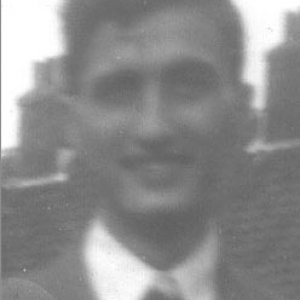
PARAS Lewis, Walter George
SURNAME Lewis FORENAME Walter George UNIT 1 Bn RANK Lance Corporal NUMBER 1717127 DATE OF DEATH 17th September 1944 AGE 24 GRAVESITE Arnhem Oosterbeek War Cemetery,Netherlands 1.B.18 ADDITIONAL INFORMATION born Liverpool son of Walter and Annie Lewis,West Derby,Liverpool...- John Robertson
- Thread
- arnhem oosterbeek war cemetery
- Replies: 0
- Forum: Roll Of Honour
-

PARAS Dougan, Robert Alexander
SURNAME Dougan FORENAME Robert Alexander UNIT 1 Bn RANK Private NUMBER 6985006 DATE OF DEATH 17th September 1944 AGE 20 GRAVESITE Arnhem Oosterbeek War Cemetery,Netherlands 17.C.13 ADDITIONAL INFORMATION born Co.Armagh,Northern Ireland son of Arthur and Sarah Elizabeth...- John Robertson
- Thread
- arnhem oosterbeek war cemetery
- Replies: 0
- Forum: Roll Of Honour
-

PARAS Swallow, Benjamin Clayton
SURNAME Swallow FORENAME Benjamin Clayton UNIT 21 Independent Company RANK Sergeant NUMBER 2082640 DATE OF DEATH 13th December 1944 AGE 23 GRAVESITE Arnhem Oosterbeek War Cemetery, Netherlands 18.C.16 ADDITIONAL INFORMATION born 21.06.1921 Lincoln son of Benjamin Dunn...- John Robertson
- Thread
- 21st independent parachute company arnhem oosterbeek war cemetery
- Replies: 0
- Forum: Roll Of Honour
-
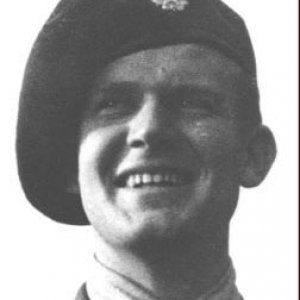
PARAS Horsley, John
SURNAME Horsley FORENAME John UNIT 21 Independent Company (1 (Airborne) Bn Border Regiment,attached) RANK Lieutenant NUMBER 164948 DATE OF DEATH 27th September 1944 AGE 24 GRAVESITE Arnhem Oosterbeek War Cemetery,Netherlands 18.C.6 ADDITIONAL INFORMATION born...- John Robertson
- Thread
- arnhem oosterbeek war cemetery
- Replies: 0
- Forum: Roll Of Honour
-

PARAS Cameron, James
SURNAME Cameron FORENAME James UNIT 21 Independent Company RANK Private NUMBER 6982743 DATE OF DEATH 26th September 1944 AGE 22 GRAVESITE Arnhem Oosterbeek War Cemetery,Netherlands 18.C.4 ADDITIONAL INFORMATION born Co.Antrim,Northern Ireland son of Thomas and Ellen...- John Robertson
- Thread
- arnhem oosterbeek war cemetery
- Replies: 0
- Forum: Roll Of Honour
-
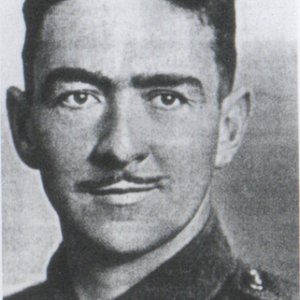
PARAS Mitchell, George
SURNAME Mitchell FORENAME George UNIT 21 Independent Company RANK Lance Corporal NUMBER 2045251 DATE OF DEATH 23rd-25th September 1944 AGE 30 GRAVESITE Arnhem Oosterbeek War Cemetery,Netherlands 6.C.7 ADDITIONAL INFORMATION born Brighton,Sussex resided Croydon,Surrey son...- John Robertson
- Thread
- arnhem oosterbeek war cemetery
- Replies: 0
- Forum: Roll Of Honour
-
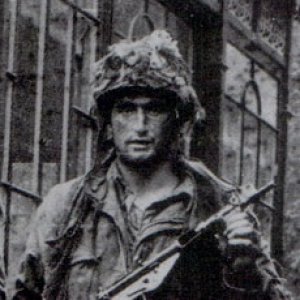
PARAS Rodley, John Peter
SURNAME Rodley FORENAME John Peter UNIT 21 Independent Company RANK Corporal NUMBER 14623901 DATE OF DEATH 23rd September 1944 AGE 29 GRAVESITE Arnhem Oosterbeek War Cemetery,Netherlands 23.A.11 ADDITIONAL INFORMATION true name Rosenfeld,Hans born Germany resided...- John Robertson
- Thread
- arnhem oosterbeek war cemetery
- Replies: 0
- Forum: Roll Of Honour
-

PARAS Avallone, John Paul
SURNAME Avallone FORENAME John Paul UNIT 21 Independent Company RANK Private NUMBER 7627563 DATE OF DEATH 23rd September 1944 AGE 26 GRAVESITE Arnhem Oosterbeek War Cemetery,Netherlands 5.A.4 ADDITIONAL INFORMATION born Lanarkshire resided Lanarkshire died Holland- John Robertson
- Thread
- 21st independent parachute company arnhem oosterbeek war cemetery
- Replies: 1
- Forum: Roll Of Honour
-
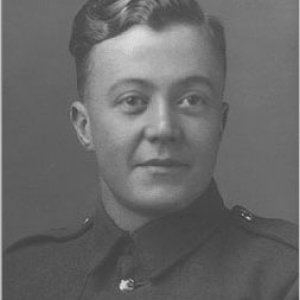
PARAS Philpot, Albert Edmund
SURNAME Philpot FORENAME Albert Edmund UNIT 21 Independent Company RANK Private NUMBER 4691633 DATE OF DEATH 21st-23rd September 1944 AGE 25 GRAVESITE Arnhem Oosterbeek War Cemetery,Netherlands 27.A.8 ADDITIONAL INFORMATION born Wakefield,Yorkshire resided...- John Robertson
- Thread
- arnhem oosterbeek war cemetery
- Replies: 0
- Forum: Roll Of Honour
-
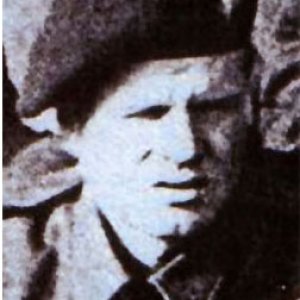
PARAS Fiely, James Vincent
SURNAME Fiely FORENAME James Vincent UNIT 21 Independent Company RANK Private NUMBER 5338078 DATE OF DEATH 22nd September 1944 AGE 23 GRAVESITE Arnhem Oosterbeek War Cemetery,Netherlands 30.A.4 ADDITIONAL INFORMATION born Irish Republic son of Thomas and Mary...- John Robertson
- Thread
- arnhem oosterbeek war cemetery
- Replies: 0
- Forum: Roll Of Honour
-
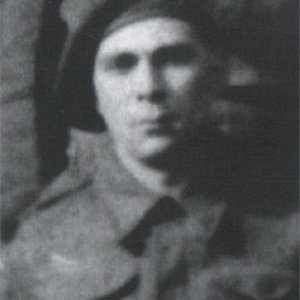
PARAS May, Maurice Langton (Joe)
SURNAME May FORENAME Maurice Langton (Joe) UNIT 21 Independent Company RANK Private NUMBER 4039090 DATE OF DEATH 21st September 1944 AGE 29 GRAVESITE Arnhem Oosterbeek War Cemetery,Netherlands 28.C.8 ADDITIONAL INFORMATION born London resided London EC son of Frederick...- John Robertson
- Thread
- arnhem oosterbeek war cemetery
- Replies: 0
- Forum: Roll Of Honour
-
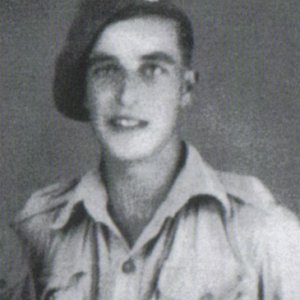
PARAS Martin, Dennis Basil
SURNAME Martin FORENAME Dennis Basil UNIT 21 Independent Company RANK Sergeant NUMBER 7014945 DATE OF DEATH 20th September 1944 AGE 23 GRAVESITE Arnhem Oosterbeek War Cemetery,Netherlands 20.C.5 ADDITIONAL INFORMATION born London N resided London N son of George and...- John Robertson
- Thread
- arnhem oosterbeek war cemetery
- Replies: 0
- Forum: Roll Of Honour
-

PARAS Landon, Walter (Lou)
SURNAME Landon FORENAME Walter (Lou) UNIT 21 Independent Company RANK Private NUMBER 14623912 DATE OF DEATH 20th September 1944 AGE 24 GRAVESITE Arnhem Oosterbeek War Cemetery,Netherlands 6.B.9 ADDITIONAL INFORMATION true name Lewy-Lingen,Walter born South Africa resided...- John Robertson
- Thread
- arnhem oosterbeek war cemetery
- Replies: 0
- Forum: Roll Of Honour
-

PARAS Jones, James Arthur
SURNAME Jones FORENAME James Arthur UNIT 21 Independent Company RANK Corporal NUMBER 5948946 DATE OF DEATH 17th September 1944 AGE 24 GRAVESITE Arnhem Oosterbeek War Cemetery,Netherlands 15.A.2 ADDITIONAL INFORMATION born Cardiff resided Worcester son of Edgar and Edith...- John Robertson
- Thread
- arnhem oosterbeek war cemetery
- Replies: 0
- Forum: Roll Of Honour
-

PARAS McKenna, James Lloyd
SURNAME McKenna FORENAME James Lloyd UNIT 11 Bn RANK Lieutenant NUMBER CDN/639 DATE OF DEATH 22nd September 1944 AGE 26 GRAVESITE Arnhem Oosterbeek War Cemetery,Netherlands 6.A.9 ADDITIONAL INFORMATION son of Cornelius and Elizabeth McKenna,Grand Pabos,Gaspe...- John Robertson
- Thread
- arnhem oosterbeek war cemetery
- Replies: 0
- Forum: Roll Of Honour
-

CANADIAN PARA McKenna, James Lloyd
SURNAME McKenna FORENAME James Lloyd UNIT attached 11 Bn Parachute Regiment,AAC RANK Lieutenant NUMBER CDN/639 DATE OF DEATH 22nd September 1944 AGE 26 GRAVESITE Arnhem Oosterbeek War Cemetery,Netherlands 6.A.9 ADDITIONAL INFORMATION son of Cornelius and Elizabeth...- John Robertson
- Thread
- arnhem oosterbeek war cemetery
- Replies: 0
- Forum: Roll Of Honour
-

PARAS Gronert, Thomas (Tom)
SURNAME Gronert FORENAME Thomas (Tom) UNIT 2 Bn (B Company) RANK Private NUMBER 5511523 DATE OF DEATH 17th September 1944 AGE 21 GRAVESITE Arnhem Oosterbeek War Cemetery,Netherlands 18.A.17 ADDITIONAL INFORMATION born Cornwall son of Robert and Lylie Gronert,Carn...- John Robertson
- Thread
- arnhem oosterbeek war cemetery
- Replies: 0
- Forum: Roll Of Honour

